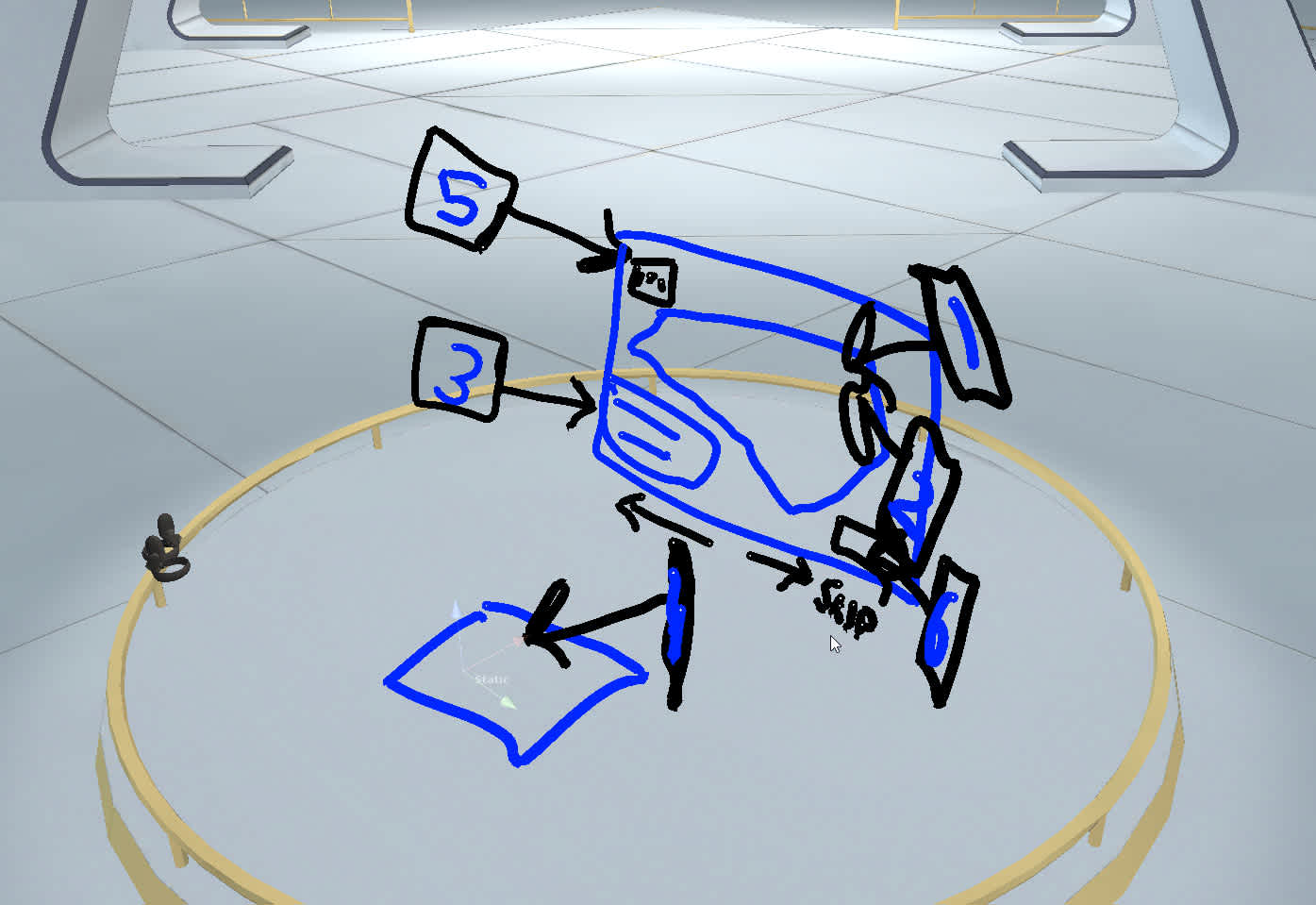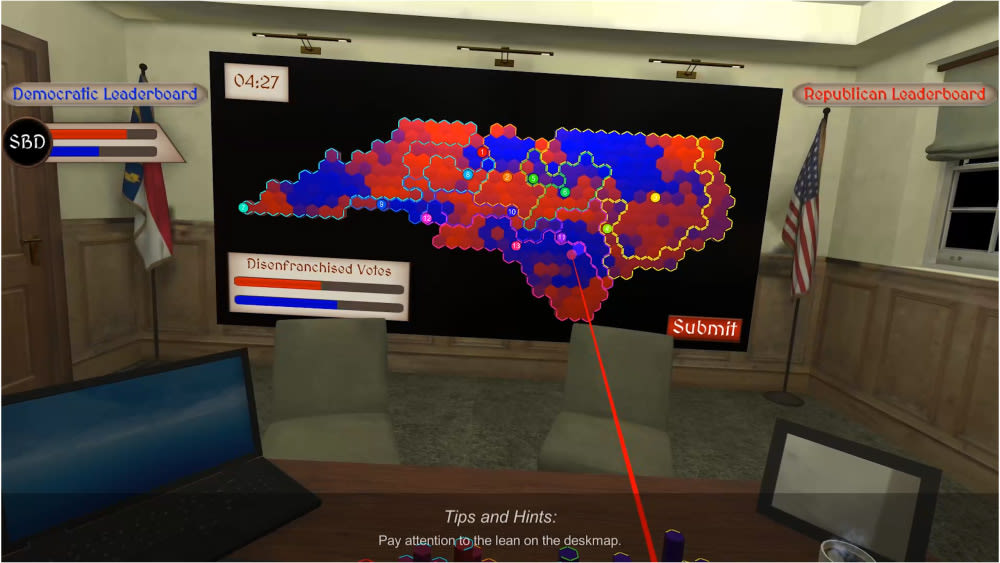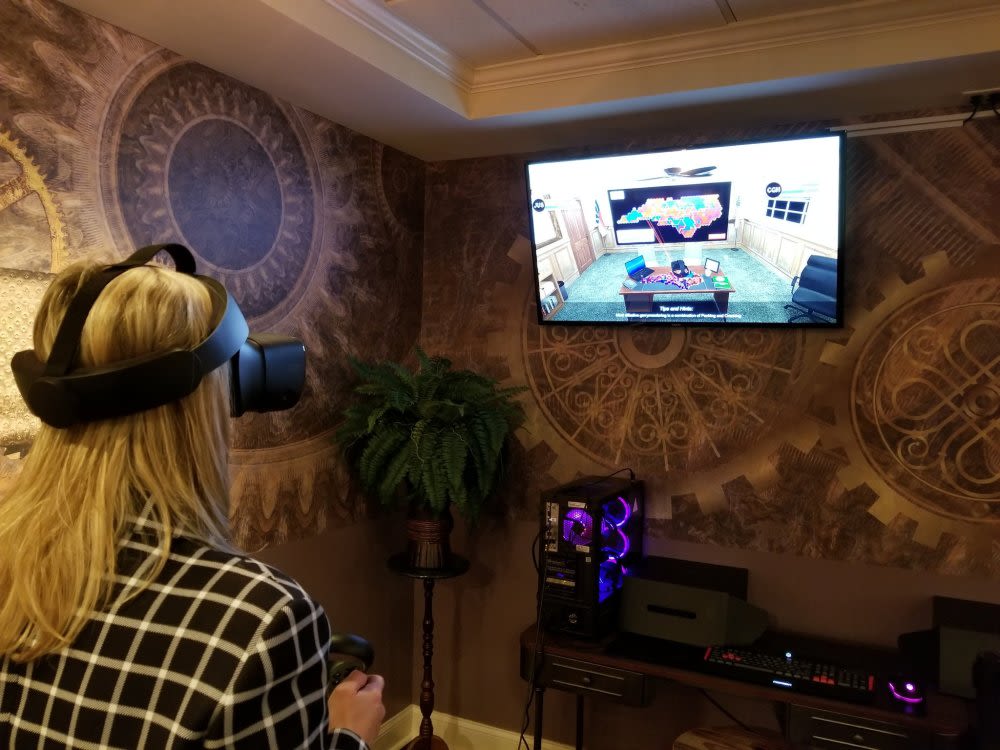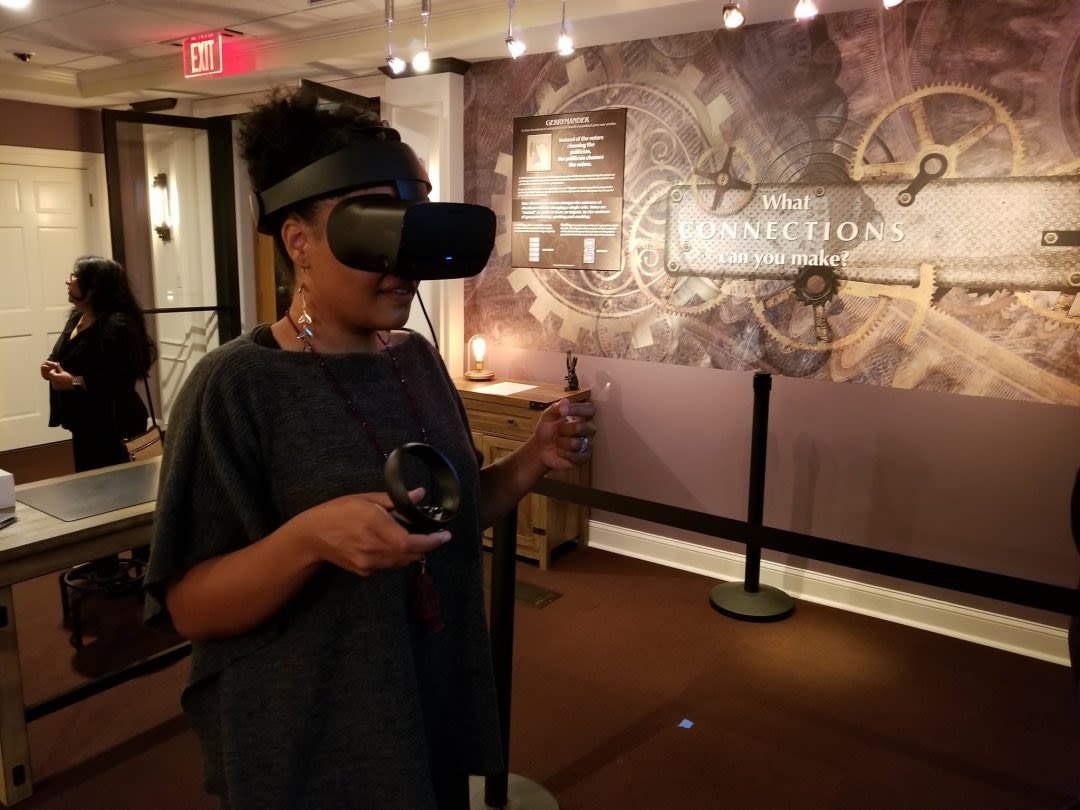
Client
Greensboro History Museum
Services
Emerging Tech, AR/VR, and UX/UI
Demonstrating Gerrymandering in VR
Gerrymandering (specifically partisan gerrymandering) is the practice of drawing legislative districts that benefit a political party over its rivals. The Greensboro History Museum wanted to add a cutting-edge, interactive exhibit to their Project Democracy 20/20 initiative that demonstrated the impact of gerrymandering in real-time. To that end, CrossComm was challenged with creating an engaging, intuitive game that leveraged the experiential learning capabilities of virtual reality to show the cause-and-effect relationship of gerrymandering decisions on political power.
Our Approach
Creating an Intuitive, Engaging Experience For Museum-Goers
CrossComm needed to develop a straightforward way to demonstrate gerrymandering on a North Carolina state map. We used hexagonal shapes as the building blocks of the map, allowing a player to reshape districts by adding or removing hexagons. After experimenting with several ways to visualize population density and political lean, our developers decided on: 1) Transitioning colors to show the changing of an area's lean; 2) A second map (placed on the virtual desk in front of the player) which used the height of hexagonal prisms to depict population density.
Debut of a Unique 3D Prototyping Setup
When building Gerrymander Madness, we were able to utilize another virtual space that we created to help us ideate in 3D. This space allows for multiple users to enter the same VR environment (regardless of geographic location) to communicate, collaborate, and even prototype ideas. Within this space, CrossComm developers were able to quickly draw 3D, interactive sketches of objects to assess their spatial properties and necessities.
Prototyping the Gerrymander Madness Map while in VR
Collaborating To Fine-Tune The Experience
Gerrymander Madness is the product of consistent collaboration and agility between the Greensboro History Museum and CrossComm to best meet the needs of the project. As real-world events around gerrymandering shifted, CrossComm was able to pivot its development to make Gerrymander madness more relevant. For example, CrossComm and the Greensboro History Museum made the decision to shift from a generic state map to a North Carolina state map after a Supreme Court decision ruled that gerrymandering was a state matter. They also shifted the setting of the VR experience from a virtual museum to a virtual government office to give more visual context and realism to the experience.
Results
Launching at the Greensboro History Museum
Gerrymander Madness successfully launched at the Greensboro History Museum on December 7, 2019 as part of the museum’s multi-year Project Democracy 20/20 initiative. Project Democracy 20/20 uses educational programs and innovative exhibits to explore important topics in American democracy. The initiative includes a traveling Smithsonian exhibition titled 'American Democracy: A Great Leap of Faith.'
The excitement around the Gerrymander Madness VR game helped the Project Democracy 20/20 receive extra publicity and attention. Listen to CrossComm’s Don Shin and GHM Curator of Exhibits Robert Harris talk about Gerrymander Madness on WUNC Radio’s The State of Things.
Due to the COVID-19 pandemic, CrossComm and the Greensboro History Museum made the Gerrymander Madness game available for free download at the Oculus Rift store and the Steam store—allowing VR headset owners to enjoy the museum exhibit from the safety of their homes.







